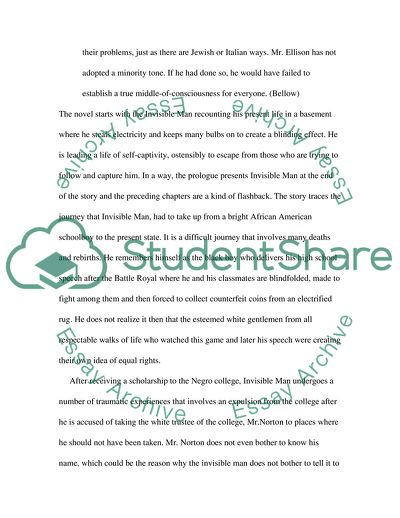Cite this document
(Analysis of Ralph Ellisons Invisible Man Essay Example | Topics and Well Written Essays - 1750 words, n.d.)
Analysis of Ralph Ellisons Invisible Man Essay Example | Topics and Well Written Essays - 1750 words. https://studentshare.org/literature/1707566-invisible-man
Analysis of Ralph Ellisons Invisible Man Essay Example | Topics and Well Written Essays - 1750 words. https://studentshare.org/literature/1707566-invisible-man
(Analysis of Ralph Ellisons Invisible Man Essay Example | Topics and Well Written Essays - 1750 Words)
Analysis of Ralph Ellisons Invisible Man Essay Example | Topics and Well Written Essays - 1750 Words. https://studentshare.org/literature/1707566-invisible-man.
Analysis of Ralph Ellisons Invisible Man Essay Example | Topics and Well Written Essays - 1750 Words. https://studentshare.org/literature/1707566-invisible-man.
“Analysis of Ralph Ellisons Invisible Man Essay Example | Topics and Well Written Essays - 1750 Words”. https://studentshare.org/literature/1707566-invisible-man.


